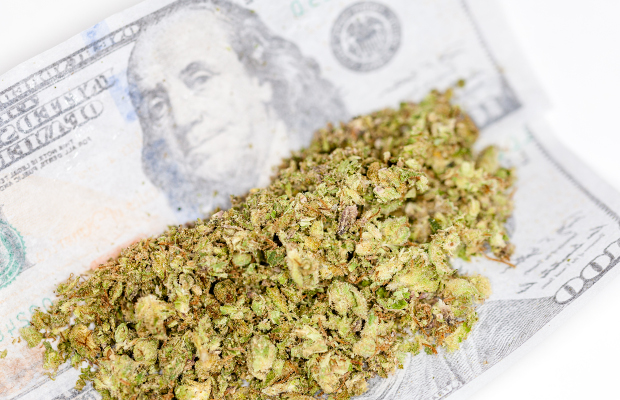
Economics
After 3 Years, Feds Back to Tracking Cannabis Markets
The Substance Abuse and Mental Health Services Administration has decided to resume tracking the marijuana market in the United States, which in their eyes, is still illegal no matter what state you live in.
Up through 2014, SAMHSA tracked the marijuana market through the National Survey on Drug Use and Health. It has been excluded from the survey for the past three years, but this year it’s back.
The survey’s marijuana marketplace module consists of a series of questions that seek to gather data such as the location, quantity, cost and type of marijuana being purchased across the nation. This year’s module will be unchanged from the version last included in 2014.
The NSDUH is a survey of the population aged 12 or older. The data collected is mined to figure out the prevalence of use when it comes to tobacco, alcohol, other scheduled narcotics, illicit use of prescription drugs and obviously America’s most prominently used drug — cannabis.
We reached out to the experts to see what we could expect from the move in D.C. to return to tracking the market at the consumer level.
Dr. Amanda Reiman, who spearheaded the Drug Policy Alliance effort on California’s successful Adult Use of Marijuana Act, has been working with the data for over a decade.
“It sounds like SAMHSA wants to better understand the impact of changing cannabis laws on the illicit market purchasing behaviors of consumers,” Reiman said. “The previous questions assessed purchasing patterns such as frequency of purchase, type of location where purchasing happens and the familiarity the purchaser has with the seller.”
She added that, like the systemic dangers of the Drug War, market-based risks have a cultural component as well.
“I analyzed these data in 2007 and found that people of color were participating in purchasing habits that are high risk.”
Habits, she said, include buying smaller amounts, buying more frequently, buying in public and buying from people they don’t know.
“Privilege equates to privacy, which is protective against law enforcement involvement,” Reiman said. “Providing people a safe and legal place to obtain cannabis should most benefit the folks who have to take the most risk to obtain the product. It will be interesting to see if the data support that.”
Marijuana Policy Project Director of Communications, Mason Tvert, believes the data could give insight into the transitioning market.
“The country is transitioning from an entirely illegal market nationwide to a patchwork of state-regulated markets for medical and broader adult use,” he said. “The marketplace data could shed some light on the impact of that transition. It could potentially lead to a greater understanding and appreciation for the benefits of replacing prohibition with regulation.”
One of the reasons that the question was removed was because people were taking a long time to remember where they bought their pot.
In response to a query by Cannabis Now, NSDUH Branch Chief, Jonaki Bose, said the question was removed to make space for different questions people answered faster, but that the information from the module has proven to useful to stakeholders.
From Bose’s response:
“Since its development in 2001, the market for marijuana purchases has changed dramatically. For example, the NSDUH items provide only two options for reporting purchases – loose and joints; the items miss other types of sales such as oils, edibles, topicals and tinctures. In addition, the module does not distinguish legal and medical purchases from illegal purchases, making the data increasingly difficult to interpret.
Despite these methodological concerns, stakeholders have relied on the data for policy evaluation and have regularly reported results from the marijuana market module…Thirteen years of marijuana purchase data (from 2002 to 2014) are currently available for analysis and reporting. However, stakeholders made clear that ongoing data collection is key to meeting their needs. SAMHSA chose to reintroduce the marijuana market module in order to respond to stakeholders’ expressed data needs.”
The previous 14 years of market data are available for researchers, and the changes seen from the gap in time should be fascinating.
TELL US, would you tell the feds how much you pay for pot?
























